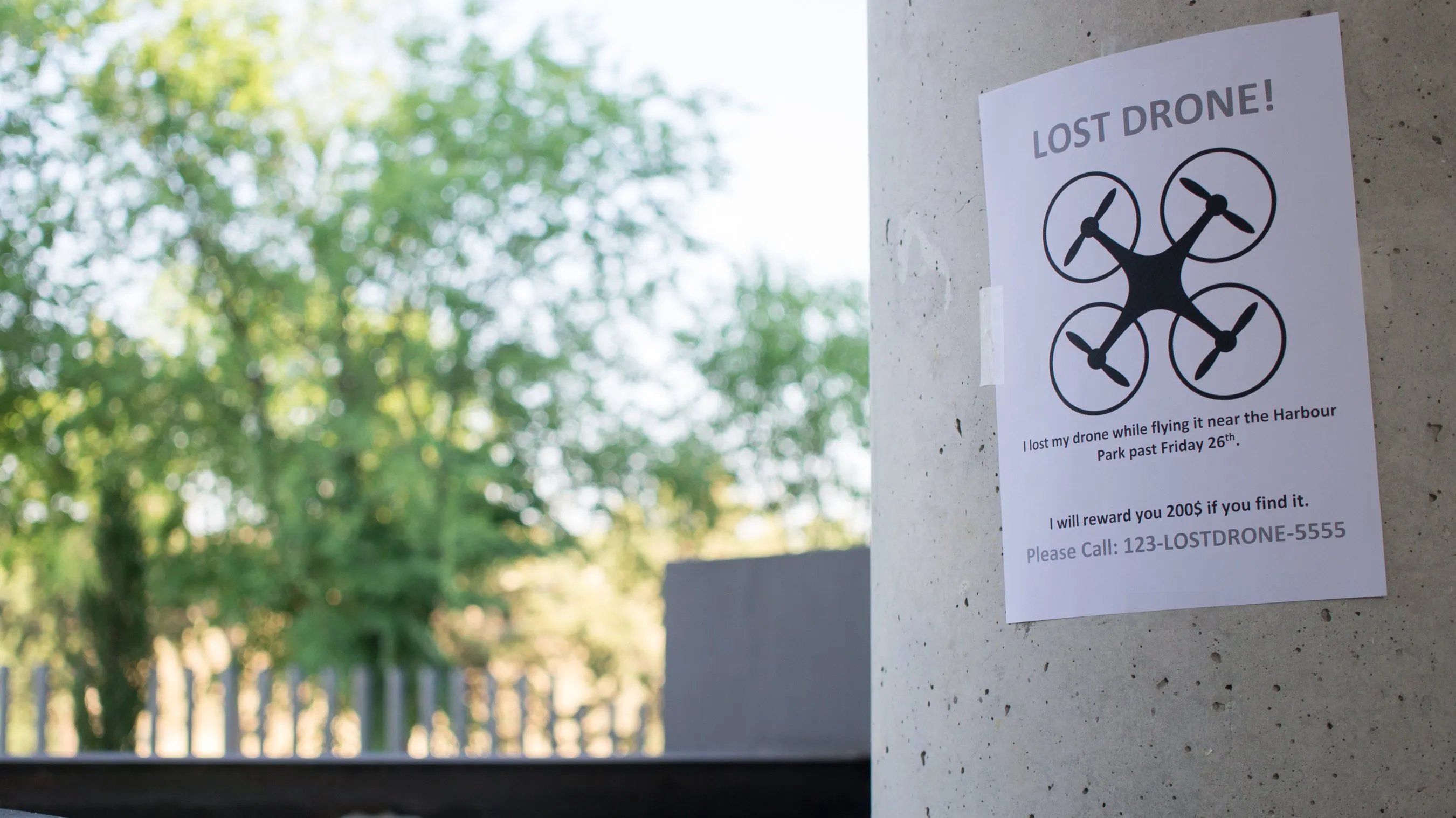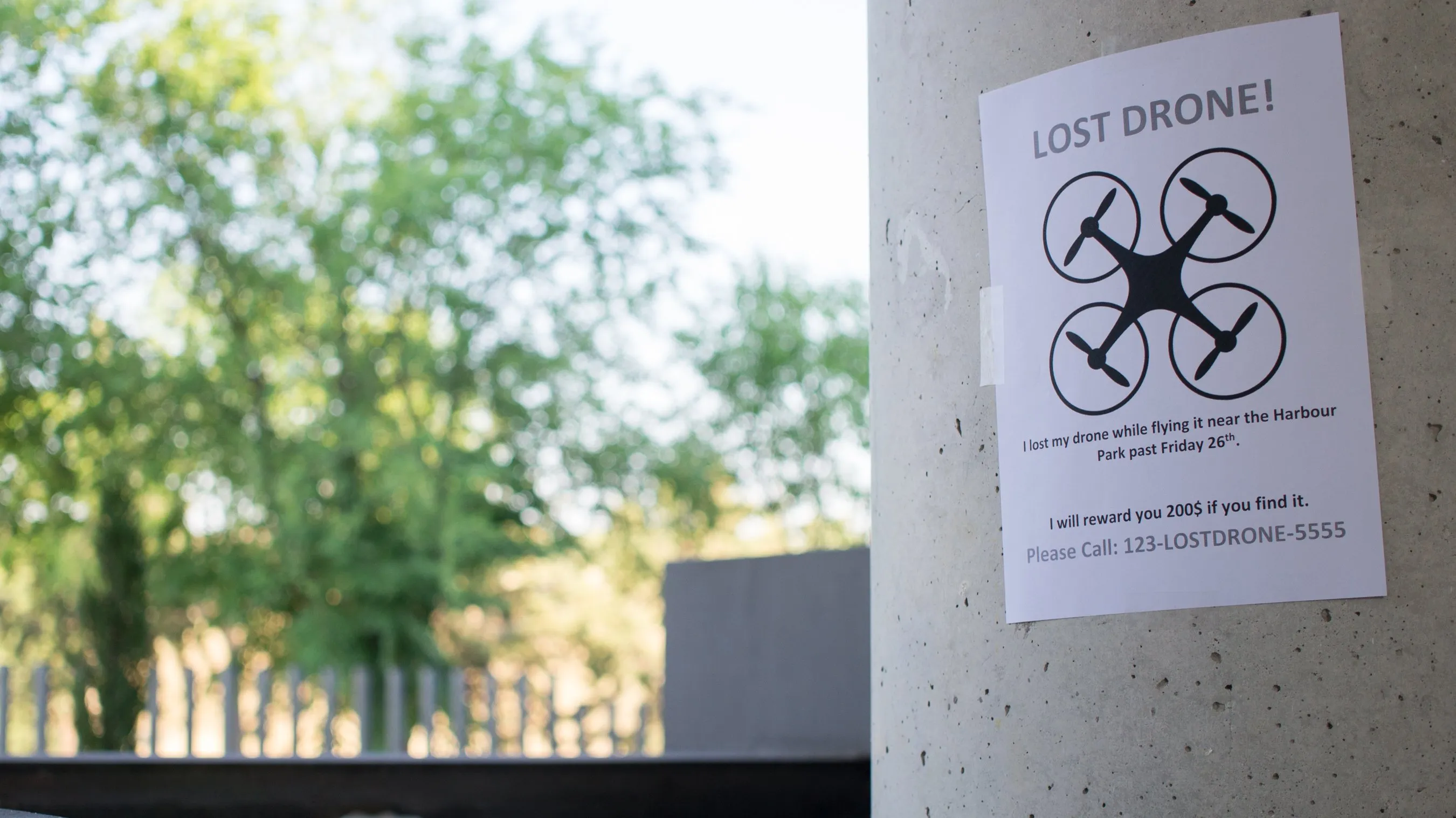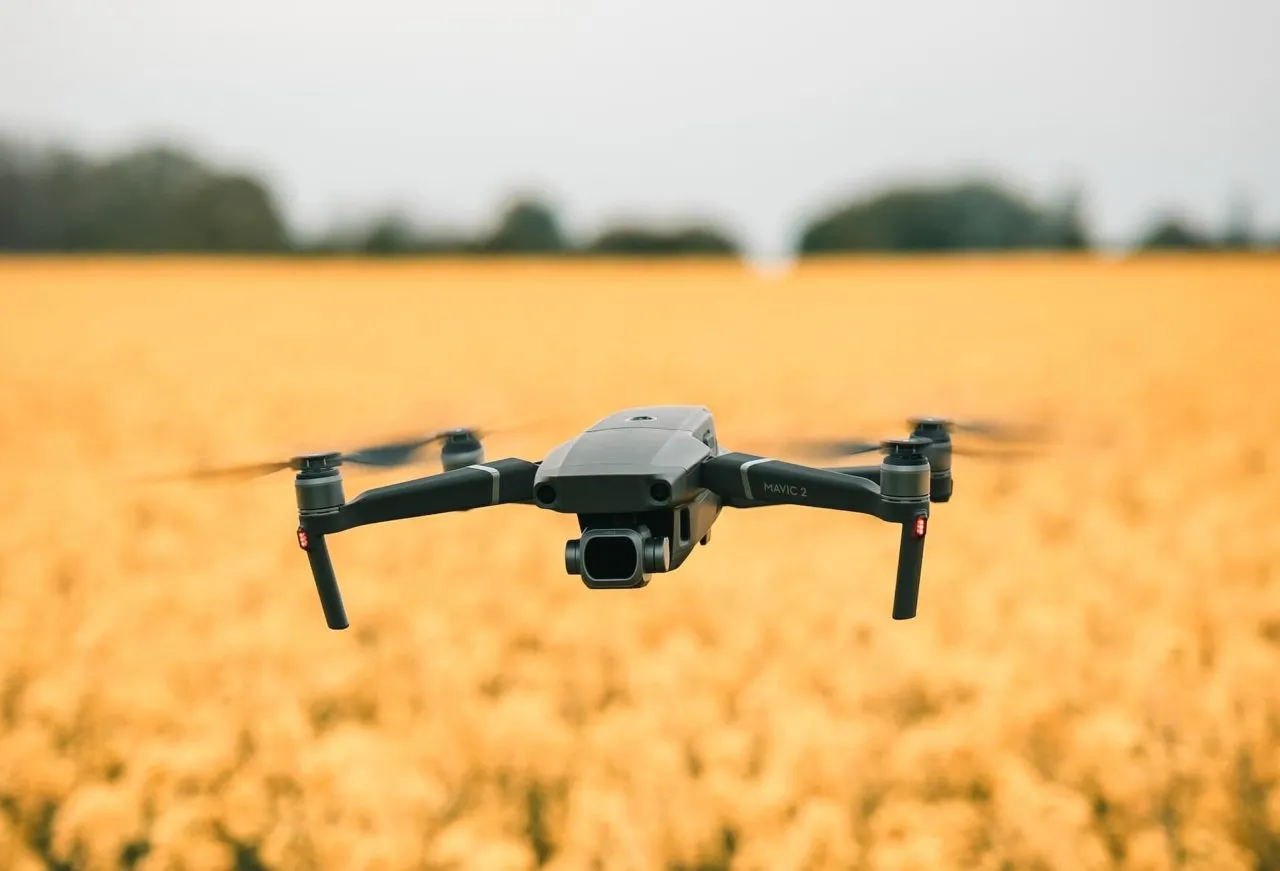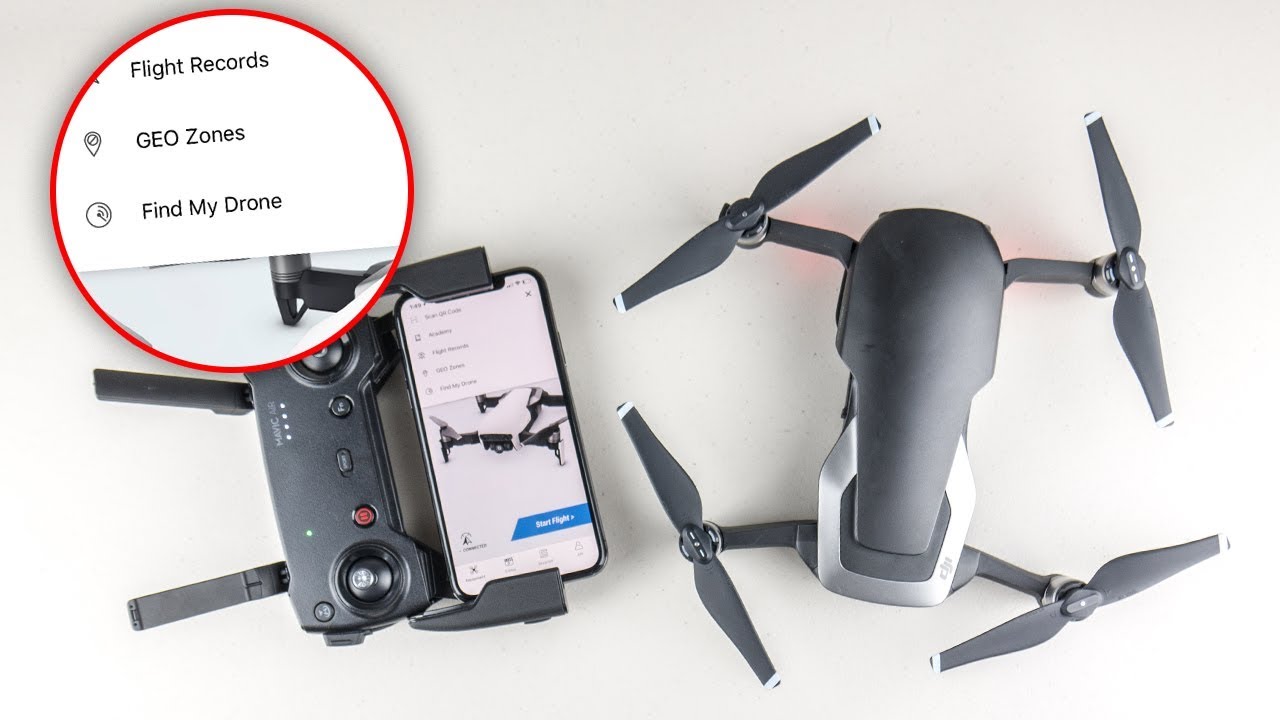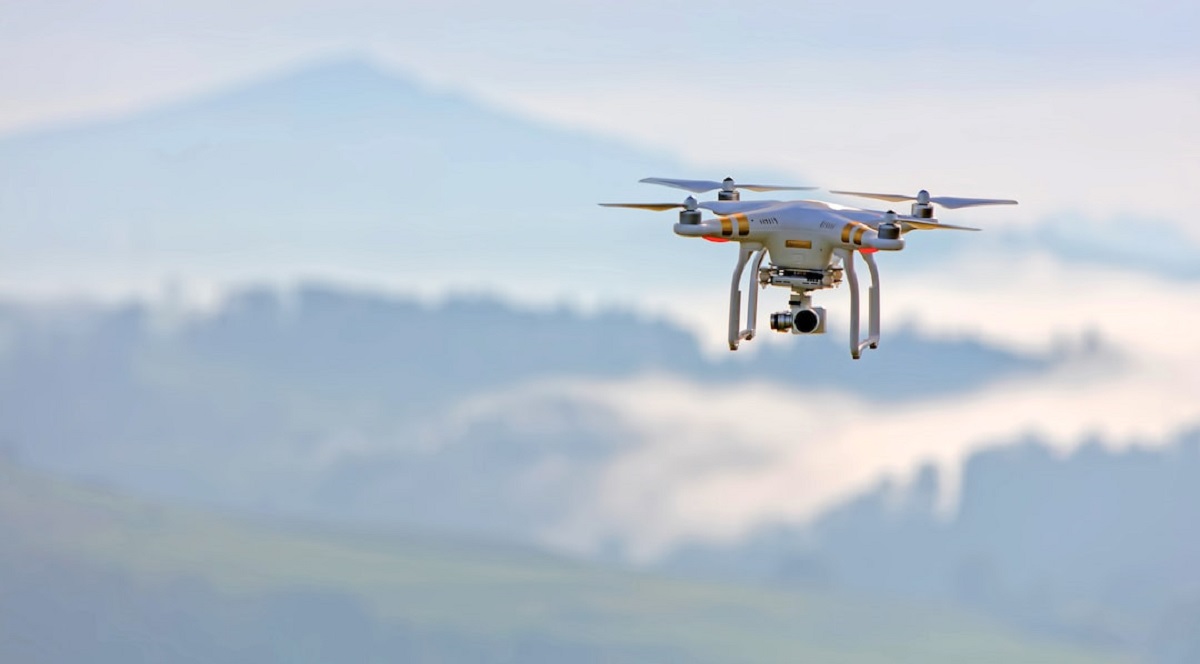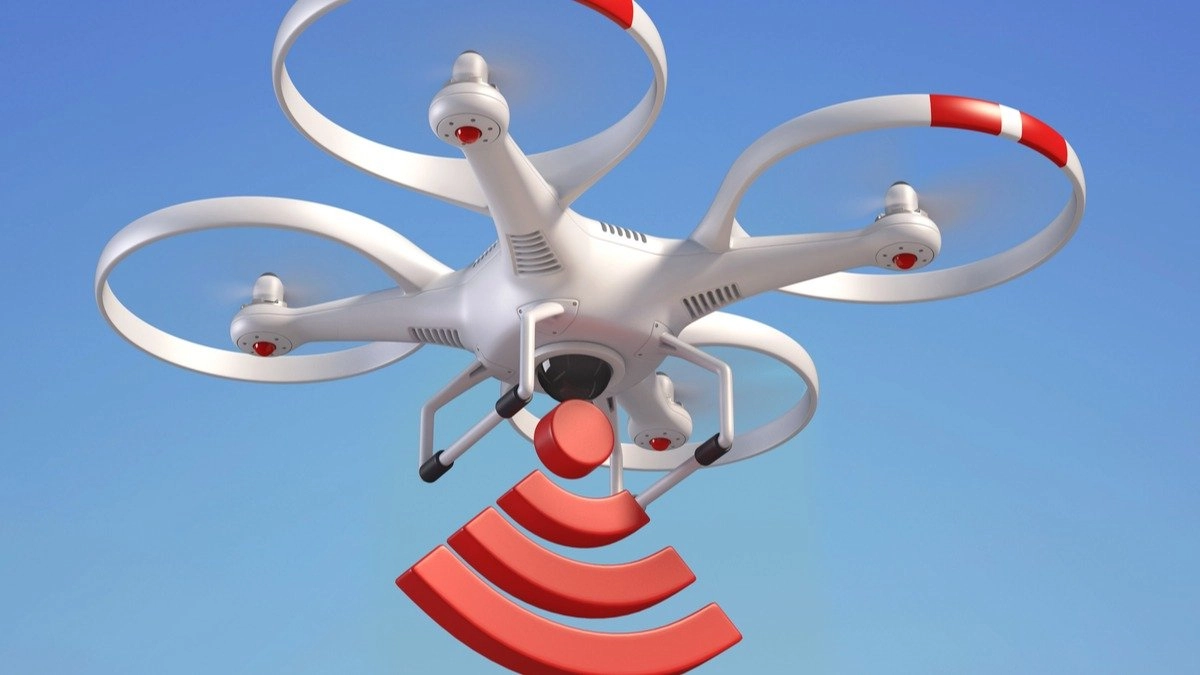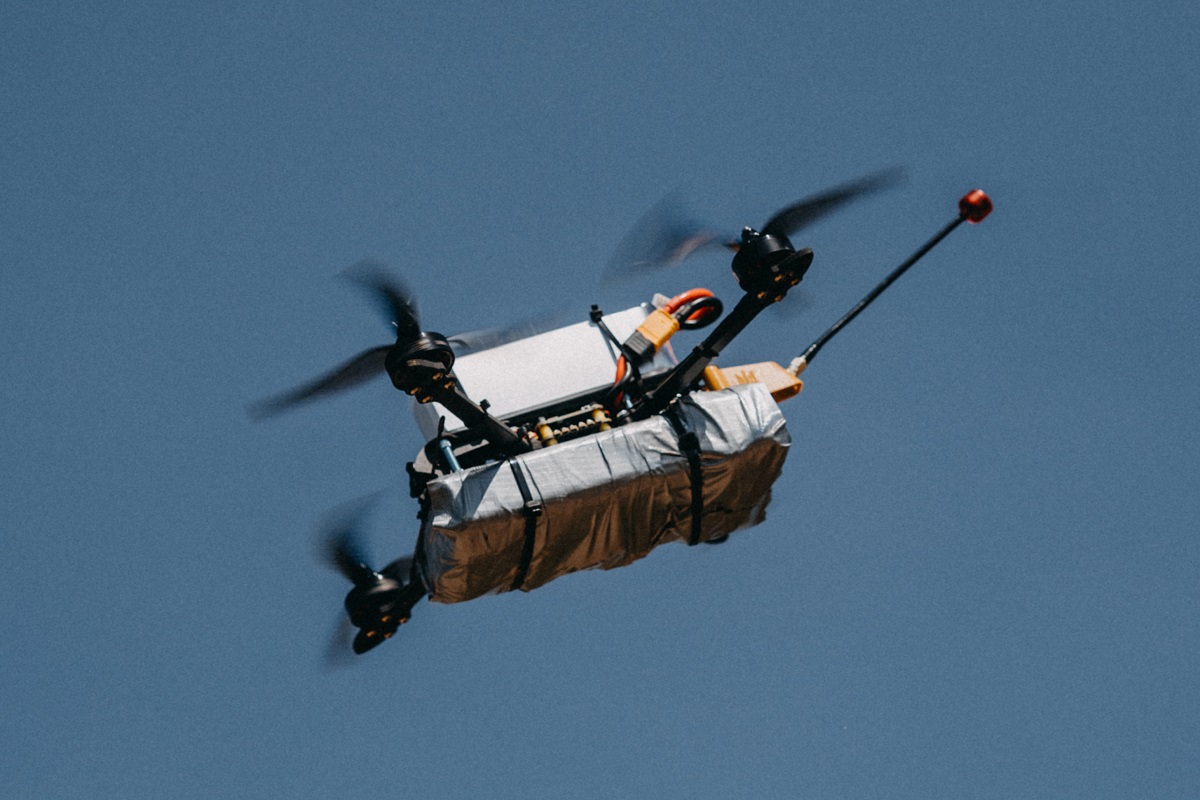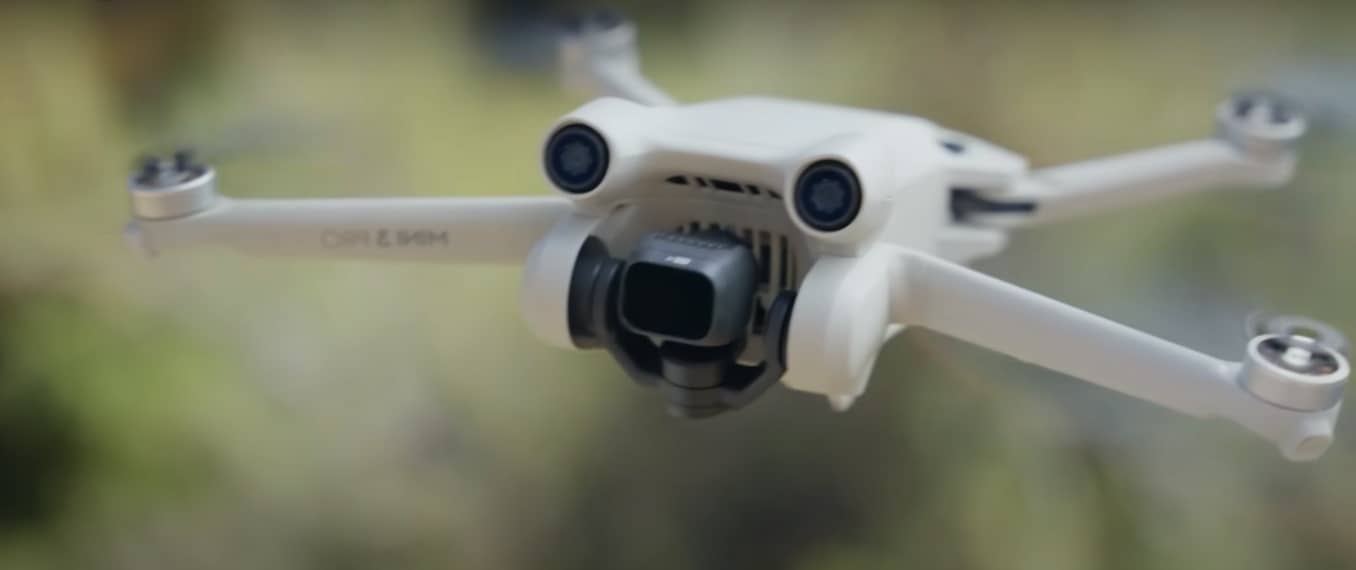Introduction
Welcome to the world of drones, where soaring in the sky and capturing breathtaking aerial footage has become the norm. However, what happens when your beloved drone goes missing? Losing a drone can feel like losing a part of yourself, especially if you’ve spent countless hours mastering its controls and customizing its features. But fear not, because in this article, we will explore various methods to help you find your lost drone, even without GPS.
While GPS has become a common feature in many drones, not all models are equipped with this capability. Additionally, even drones with GPS can lose connection or encounter technical issues that prevent them from relaying their location. This is where alternative methods come into play. By understanding the challenges of finding a lost drone and exploring alternative tracking options, you can increase your chances of recovering your cherished flying companion.
Discovering your lost drone can be a challenging task, but it’s not impossible. In the following sections, we will delve into different techniques that can aid you in locating your missing drone. From relying on the last known location and using visual cues to utilizing radio frequency trackers, smartphone apps, and drones with built-in locator features, we will cover a range of options to suit various situations and budgets.
Before we dive into the specific methods, it’s essential to understand the precautions you should take to minimize the risk of losing your drone in the first place. By following these guidelines, you can reduce the chance of losing your drone and increase the likelihood of a successful recovery if it does go missing. Remember, prevention is always better than cure when it comes to lost drones.
So, whether you’re an experienced drone pilot or just starting out, read on to discover the fascinating world of finding lost drones without relying solely on GPS technology. Get ready to embark on an adventure where ingenuity, resourcefulness, and a touch of detective work can help you reunite with your beloved aerial companion.
Understanding the Challenges of Finding a Lost Drone
Losing a drone can be a disheartening experience, but before we dive into the methods of locating a lost drone, it’s crucial to understand the challenges associated with this task. Drones are relatively small and lightweight, making them susceptible to strong winds, becoming entangled in trees, or even falling into bodies of water. Additionally, drones can lose power mid-flight, leading to an unexpected crash and potential loss.
One of the primary challenges in finding a lost drone is the lack of a GPS tracking system. While many drones today come equipped with GPS technology, enabling real-time location tracking, not all models have this feature. Without GPS, it can be significantly more challenging to pinpoint the exact location of a lost drone, especially in vast open spaces or densely populated areas.
Furthermore, even if your drone has GPS functionality, it’s not foolproof. Poor connectivity, errant signals, or technical malfunctions can compromise the accuracy and reliability of GPS data. This means that even if your drone is transmitting its location, it may not be entirely accurate or up to date.
Another challenge is the limited battery life of drones. Most consumer drones have a flight time of around 20-30 minutes on a single charge. If your drone goes missing towards the end of its battery life, you may have a limited window of opportunity to locate it before the battery drains completely. This adds an extra level of urgency and pressure to the search process.
In addition to the technical challenges, environmental factors can also impact the search for a lost drone. If your drone goes missing in thick vegetation, dense forests, or bodies of water, it can be challenging to visually locate and retrieve it. In some cases, professional assistance may be required to navigate these difficult and potentially dangerous terrains.
Overall, finding a lost drone presents a unique set of challenges. However, with the right approaches and alternative tracking methods, you can increase your chances of recovering your lost drone. In the following sections, we will explore different techniques and tools that can aid in the search process, regardless of whether your drone has GPS functionality or not. So, let’s dive into the world of creative solutions and clever strategies to find your lost drone!
Understanding How GPS Works in Drones
Global Positioning System (GPS) technology has revolutionized the way we navigate and track objects, including drones. GPS enables drones to determine their precise location and continuously transmit this information to the pilot or ground control station. Understanding how GPS works in drones is crucial for comprehending its limitations and the implications when searching for a lost drone.
In simple terms, GPS is a network of satellites orbiting the Earth that emit signals containing positioning information. Drones equipped with a GPS receiver can receive these signals and triangulate their exact location on the Earth’s surface. This location data can be used for real-time flight analysis, route planning, and even tracking the drone’s movement on a map.
GPS technology offers several advantages for drone pilots. It allows for precise navigation and flight control, which is particularly useful during autonomous flight modes and missions. It also enables features such as return-to-home functionality, where the drone automatically flies back to its takeoff point.
However, it’s important to note that GPS has its limitations when it comes to drone tracking. First, GPS signals can be affected by external factors such as tall buildings, dense vegetation, and bad weather conditions. These obstacles can cause signal disruptions or inaccuracies, leading to less reliable location data.
Secondly, GPS signals are not infallible when it comes to altitude. While the horizontal position can be determined relatively accurately, vertical positioning (altitude) can have higher margins of error. This means that knowing the exact altitude of a lost drone may be more challenging.
Furthermore, if a drone loses connection with the GPS satellites, either due to signal disruptions or technical issues, it will no longer be able to transmit its location data. This can happen when flying in areas with poor GPS reception, such as densely populated urban environments or remote regions with limited satellite coverage.
Lastly, if a drone’s GPS receiver malfunctions or is disabled, it will be unable to use GPS tracking altogether. In these cases, alternative methods and tools become necessary to locate the lost drone.
Despite its limitations, GPS remains a valuable tool for tracking and recovering lost drones. Many modern consumer and professional drones are equipped with GPS functionality, enabling more precise navigation and flight control. However, even without GPS, there are alternative methods that can assist in finding a lost drone, as we will explore in the following sections.
Alternative Ways to Track Your Drone
While GPS technology is a reliable and commonly used method for tracking drones, there are alternative ways to locate a lost drone, even if it doesn’t have GPS functionality or if GPS is not providing accurate data. These alternative tracking methods can significantly increase your chances of finding your drone. Let’s explore some of these options:
1. Using the Last Known Location: When you realize that your drone is missing, it’s crucial to determine its last known location. This information can serve as a starting point for your search efforts. If your drone has a flight log feature, you can review the flight path and analyze the coordinates. This can help you identify potential areas where your drone could have landed.
2. Relying on Visual Cues: If you were in the vicinity of your drone when it went missing, it’s essential to rely on your visual memory. Look for any unique landmarks or identifiable features that can lead you to the general area where your drone might be. Pay attention to nearby trees, buildings, or bodies of water that could serve as reference points during your search.
3. Utilizing Radio Frequency (RF) Trackers: RF trackers are small devices that can be attached to your drone or transmitter. They emit radio signals that can be detected using a handheld receiver or smartphone app. By scanning the surrounding area with the receiver, you can follow the signal and track the general direction of your lost drone. This method can be particularly useful if your drone is hidden from sight or if it landed in dense vegetation.
4. Employing Smartphone Apps: Several smartphone apps have been developed specifically for drone tracking. These apps use Bluetooth or Wi-Fi signals to detect nearby drones and provide you with their approximate location. Some apps also offer options for remote control and flight path logging, which can be valuable during the search process.
5. Using Drones with Built-in Locator Features: Some advanced drone models come with built-in locator features that can aid in locating a lost drone. These features can include LED lights for improved visibility, beepers or sirens for auditory guidance, or even automated return-to-home functions that can bring the drone back to its takeoff point. If you anticipate the possibility of losing your drone, investing in a model with built-in locator features can be highly beneficial.
These alternative tracking methods can significantly increase your chances of finding a lost drone, particularly in situations where GPS is not available or accurate. It’s important to explore these options and employ a combination of techniques that best suit your specific drone model and the circumstances surrounding its loss.
Using the Last Known Location
When your drone goes missing, one of the first steps in your search process should be to determine its last known location. The last known location serves as a crucial reference point and can help narrow down the search area. Here are some steps to consider when using the last known location to track your lost drone:
1. Review Flight Logs and GPS Data: If your drone has a flight log feature or GPS functionality, review the recorded data to extract the precise location where the drone was last detected. This information can be invaluable in guiding your search efforts. Note the latitude, longitude, and altitude of the drone at its last recorded point.
2. Analyze Flight Path and Factors: Study the flight path of your drone leading up to the point where it went missing. Identify any factors that could have caused the drone to lose control or veer off course, such as strong winds, obstacles, or technical malfunctions. This analysis can help you narrow down potential areas where the drone might have landed.
3. Mark the Last Known Location: Physically mark the last known location on a map or with a physical marker in the field. This will serve as a reference point during your search. You can also use GPS coordinates to identify the exact spot. Be sure to take note of any significant landmarks, distinctive features, or surrounding terrain that can aid in locating the drone.
4. Expand the Search Area: Based on the last known location and the analysis of the flight path, expand the search area gradually. Consider factors such as the speed and direction of the drone, potential wind patterns, and any possible obstacles that may have affected its trajectory. This wider search area will help you cover all possible landing spots.
5. Conduct a Systematic Search: Divide the search area into smaller sections and conduct a systematic search grid by grid. This can be done by walking or using other means of transportation. Focus on one section at a time, thoroughly examining the ground, trees, and other potential hiding spots where the drone may have landed.
6. Seek Help and Collaborate: If the search area is extensive or challenging to navigate, don’t hesitate to seek help from friends, fellow drone enthusiasts, or even professional search and rescue teams. Collaborating with others can significantly increase the chances of locating your lost drone.
Remember, using the last known location as a starting point is not a foolproof method, especially if your drone was in motion when it went missing. However, it provides a foundation for your search efforts and can guide you in the right direction. Combining the last known location with other tracking methods, such as visual cues or tracking devices, can further enhance your chances of recovering your lost drone.
Relying on Visual Cues
When searching for a lost drone, visual cues can be incredibly helpful in identifying potential landing areas and guiding your search efforts. By relying on your memory and observation skills, you can utilize visual cues to aid in the recovery process. Here are some steps to consider when relying on visual cues to find your lost drone:
1. Recall Your Surroundings: Try to remember the surroundings and environment where you were flying your drone before it went missing. Take note of any unique landmarks, distinct features, or notable elements that can help you locate the general area where the drone might be. This can include buildings, trees, bodies of water, or any other visual cues that stood out during your flight.
2. Observe Flight Path: Visualize the flight path of your drone leading up to the point where it disappeared. Consider the direction, altitude, and speed of the drone during its flight. This visualization can help you narrow down the search area and determine the potential landing spots.
3. Survey the Surrounding Area: Visit the area where you last flew your drone and thoroughly survey the surroundings. Look for any signs of the drone’s presence, such as broken branches, disturbed grass, or any other unusual markings on the ground. These visual cues can indicate the drone’s impact or landing site.
4. Search High and Low: Scan the area both from ground level and from higher vantage points. Climb to elevated areas, such as rooftops, hills, or other observation points, to get a broader view of the landscape. This can help you spot the drone if it landed in a hard-to-reach or concealed location.
5. Use Binoculars or Cameras: If you have access to binoculars or a camera with a zoom lens, utilize them to magnify your view and search for any visual cues that might indicate the presence of your lost drone. This can be especially useful when searching in large open areas or areas with dense vegetation.
6. Seek Assistance: Don’t hesitate to enlist the help of friends or family members in your search. They can provide a fresh perspective and assist in visually scanning the area. Collaborating with others can increase the likelihood of locating the drone by combining different vantage points and observation skills.
Remember, relying on visual cues is reliant on your memory and observation skills. It can be challenging if you were not closely tracking the drone’s location before it went missing. However, visual cues can still provide valuable insights and help narrow down the search area. Combining visual cues with other tracking methods, such as using the last known location or utilizing tracking devices, can significantly improve your chances of finding your lost drone.
Utilizing Radio Frequency (RF) Trackers
When searching for a lost drone, one effective method is to utilize Radio Frequency (RF) trackers. RF trackers are small devices that emit radio signals and can be attached to your drone or the remote controller. These trackers help you detect the presence of the drone by scanning for the emitted signals. Here are some steps to consider when utilizing RF trackers to track your lost drone:
1. Attach the RF Tracker: Attach the RF tracker to your drone or the remote controller, ensuring it is securely fastened. Some RF trackers are designed specifically for drones and can be easily attached using adhesive or mounting brackets.
2. Use a Handheld Receiver: Use a handheld receiver or scanner that is compatible with the RF tracker’s frequency range. Turn on the receiver and adjust it to the appropriate frequency to start detecting signals emitted by the RF tracker.
3. Start Scanning: Begin scanning the surrounding area while holding the handheld receiver. Walk in different directions, paying attention to the strength of the signals on the receiver. The signal strength will indicate the proximity and direction of the lost drone.
4. Follow the Signal: As you scan the area, follow the signal and move towards the direction where the signal strength is increasing. This will guide you closer to the location of the lost drone. Adjust the sensitivity settings on the receiver if needed to fine-tune the detection of the RF tracker’s signal.
5. Conduct a Grid Search: If the signal strength is fluctuating or the area is vast, it may be beneficial to conduct a systematic grid search. Divide the search area into smaller sections and thoroughly scan each section before moving on to the next. This methodical approach ensures that no area is left unchecked.
6. Use a Smartphone App: Some RF trackers come with smartphone apps that allow you to track the lost drone using your phone. These apps provide real-time updates on the location and distance of the drone, making it easier to locate it. Simply connect your phone to the RF tracker and utilize the app’s features to guide your search.
Utilizing RF trackers can be a highly effective way to track your lost drone, especially when visibility is limited or the drone is hidden from sight. The radio signals emitted by the RF tracker provide a reliable means of detection, allowing you to quickly locate the drone’s approximate location.
Remember, the range of RF trackers can vary, so ensure that you stay within the effective range of the tracker for accurate signal detection. Additionally, be mindful of potential interference from other electronic devices or structures that may impact the signal strength.
By utilizing RF trackers in your search efforts, you can significantly increase your chances of finding a lost drone, even in locations where visual cues or other tracking methods may fall short.
Employing Smartphone Apps
In today’s digital age, smartphones have become an essential tool for various tasks, including tracking lost drones. There are several smartphone apps available that can assist in locating a lost drone. These apps use Bluetooth or Wi-Fi signals to detect nearby drones and provide real-time information on their approximate location. Here are some steps to consider when employing smartphone apps to track your lost drone:
1. Research and Download Drone Tracking Apps: Look for smartphone apps specifically designed for tracking drones. Spend some time researching different apps and read reviews to ensure you choose a reliable and well-rated option. Some popular drone tracking apps include “Find My Drone” or “DroneTracker”. Download and install the chosen app on your smartphone.
2. Enable Bluetooth and Wi-Fi: Enable both Bluetooth and Wi-Fi on your smartphone. These features are crucial for the app to detect and connect with nearby drones. Make sure to keep your smartphone’s connectivity settings turned on throughout the search process.
3. Connect and Sync: Launch the drone tracking app on your smartphone and follow the instructions to connect and sync it with your lost drone. This process will vary depending on the specific app you are using. It may require pairing the app with the drone’s transmitter or entering its unique identification code.
4. Utilize Detection and Tracking Features: Once connected, the app will begin scanning for nearby drones using Bluetooth or Wi-Fi signals. It will display a list of detected drones, including their estimated distance and direction from your location. Utilize these features to guide your search and determine the general vicinity of your lost drone.
5. Follow Real-Time Updates: As you move around the search area, keep an eye on the real-time updates provided by the app. Pay attention to any changes in the signal strength or direction. This will help you narrow down the location of the lost drone and guide your search efforts more effectively.
6. Utilize Additional App Features: Some drone tracking apps offer additional features to enhance the search process. These may include remote control capabilities, flight path logging, or even virtual reality (VR) modes for an immersive search experience. Take advantage of these features to maximize your chances of locating the lost drone.
Employing smartphone apps for drone tracking can be a convenient and effective method, especially when combined with other tracking techniques. These apps provide real-time updates and can help you navigate the search area with more precision.
Keep in mind that the effectiveness of these apps may vary depending on the specific make and model of your drone, as well as the surrounding environment. Factors such as signal interference or limited connectivity range may impact the app’s performance. However, by utilizing smartphone apps as part of your search arsenal, you increase your chances of successfully locating your lost drone.
Using Drones with Built-in Locator Features
One of the most reliable ways to track a lost drone is to use a drone that comes with built-in locator features. These features are specifically designed to assist in locating a lost or missing drone. Here are some key aspects to consider when using drones with built-in locator features:
1. LED Lights: Many drones with built-in locator features are equipped with LED lights. These lights are usually located on the drone’s body or arms and can be activated to improve visibility. When flying the drone, make a note of the LED light configurations and their colors. This can help you spot the drone from a distance, even in low light conditions.
2. Auditory Guidance: Some drones have built-in beepers or sirens that can emit sound signals, helping you locate the drone by following the sound. This is especially useful when searching in dense vegetation or areas with limited visibility.
3. Automated Return-to-Home (RTH): Advanced drones often come with an automated “Return-to-Home” feature. If the drone loses connection with the controller, or if the battery level is critically low, it will automatically fly back to its takeoff point. This feature is invaluable in tracking a lost drone, as it provides a starting point for locating the drone’s landing site.
4. GPS Tracking: Some drones with built-in locator features have enhanced GPS capabilities. These drones transmit their real-time GPS coordinates to the controller or a companion mobile app. By monitoring the app or controller display, you can track the drone’s location during the flight and locate it precisely if it goes missing.
5. Utilize Mobile Apps: Some drone manufacturers offer companion mobile apps that synchronize with the drone’s built-in locator features. These apps provide real-time updates on the drone’s location, altitude, and flight path. They may also include remote control options and additional tracking functionalities.
6. Follow User Instructions: To make the most of the drone’s built-in locator features, carefully read and follow the user instructions provided by the manufacturer. Familiarize yourself with the specific functionalities of your drone’s locator features and understand how to activate them when needed.
Using a drone with built-in locator features significantly enhances your chances of finding a lost drone. These features provide visual and auditory cues that make tracking the drone easier, especially in challenging environments. It is advisable to practice flying your drone and familiarize yourself with its built-in locator features before taking it to unfamiliar or potentially risky locations.
However, it’s important to note that not all drones come with built-in locator features. If you are in the market for a new drone and are concerned about the possibility of losing it, consider investing in a model that offers these features. Whether it’s LED lights, auditory guidance, or advanced GPS tracking, these features can greatly increase the likelihood of locating and recovering your lost drone.
Precautions to Avoid Losing Your Drone
While it’s essential to know how to track a lost drone, taking precautions to avoid losing your drone in the first place is equally important. By following these precautions, you can minimize the risk of losing your drone and increase the chances of a safe and enjoyable flying experience. Here are some key precautions to consider:
1. Fly in Open Areas: Whenever possible, fly your drone in open areas with minimal obstructions. This reduces the risk of hitting trees, buildings, or other obstacles that could cause your drone to crash or become lost. Open areas also provide better visibility, making it easier to maintain visual contact with your drone.
2. Check Weather Conditions: Always check the weather conditions before flying your drone. Avoid flying in strong winds, rain, or during severe weather. Inclement weather can not only make it challenging to control your drone but also increases the risk of losing it due to sudden gusts or other weather-related issues.
3. Maintain Line of Sight: Keep your drone within your line of sight while flying. This ensures you can monitor its position, altitude, and movements effectively. Losing visual contact with your drone significantly increases the chances of losing it. If you are flying beyond visual line of sight (BVLOS), ensure you have the necessary permissions and use advanced tracking technology to maintain control.
4. Set a Safe Return-to-Home Altitude: Configure your drone’s Return-to-Home (RTH) feature to a safe altitude. This ensures that if the drone loses connection or encounters a low battery, it will have enough altitude to clear any potential obstacles before returning to its takeoff point.
5. Calibrate Compass and GPS: Before each flight, make sure to calibrate your drone’s compass and GPS. This helps ensure accurate positioning and reduces the likelihood of GPS signal issues that can affect your drone’s stability and navigation capabilities.
6. Monitor Battery Levels: Keep a close eye on your drone’s battery levels during flight. Most drones have low battery warnings, and it’s crucial to return and land your drone when the battery begins to run low. Avoid pushing the limits of the battery, as a sudden loss of power can lead to an unexpected landing or even a crash.
7. Fly with a Spotter: Whenever possible, fly your drone with a spotter. A spotter can help you maintain visual contact with the drone, warn you of any potential hazards, and assist in tracking its location if it goes out of sight. Having an extra set of eyes can greatly reduce the risk of losing your drone.
8. Register Your Drone: If required by your country’s regulations, make sure to register your drone with the appropriate authorities. This ensures that if your drone does go missing, it can be easily identified and returned to you if found by someone else.
9. Stay Updated with Local Regulations: Stay informed about the local regulations and guidelines governing drone flights in your area. Familiarize yourself with any restrictions, no-fly zones, or specific requirements that need to be followed. By adhering to these regulations, you can avoid situations that may lead to the loss of your drone.
By taking these precautions, you can minimize the chances of losing your drone and increase the overall safety of your flights. It’s important to prioritize responsible and mindful flying to ensure the longevity of your drone and the enjoyment of the hobby. Remember, prevention is always better than having to track down a lost drone.
Conclusion
Losing a drone can be a disheartening experience, but with the right knowledge and strategies, the chances of recovering a lost drone can be significantly increased. In this article, we explored various methods and techniques to track a lost drone, even without relying solely on GPS technology.
We began by understanding the challenges associated with finding a lost drone. From the lack of GPS tracking and limited battery life to environmental factors and technical malfunctions, these challenges highlight the necessity of alternative tracking methods.
We then explored alternative ways to track a lost drone, such as using the last known location as a starting point and relying on visual cues to guide the search. We discussed the effectiveness of radio frequency (RF) trackers in detecting drones and highlighted the benefits of employing smartphone apps designed specifically for drone tracking.
Additionally, we emphasized the advantages of using drones with built-in locator features, including LED lights, auditory guidance, automated return-to-home (RTH) functionalities, and enhanced GPS tracking capabilities. These features not only aid in locating a lost drone but also contribute to a safer and more secure flying experience.
Furthermore, we discussed the importance of taking precautions to avoid losing a drone in the first place. By flying in open areas, checking weather conditions, maintaining line of sight, and following proper calibration procedures, among other precautions, we can significantly mitigate the risk of losing a drone.
In conclusion, the key to successfully tracking and recovering a lost drone lies in being well-prepared, resourceful, and persistent. By combining a combination of methods and techniques, utilizing technology, and following safety guidelines, you can increase your chances of finding your beloved aerial companion and continue enjoying the thrilling world of drone flight.







